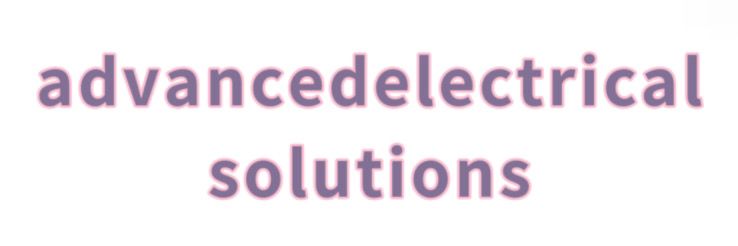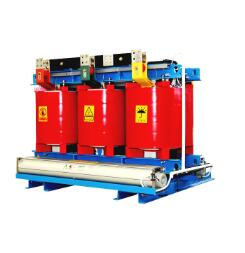Dry Type Transformer: Definition, Types, Advantages, and Applications
Transformers are essential components in electrical systems, enabling efficient voltage conversion and safe power distribution. Among the different types of transformers, the dry type transformer is widely used for applications where safety, environmental considerations, and low maintenance are important. Unlike oil-immersed transformers, dry type transformers rely on air for cooling rather than insulating oil, making them suitable for indoor installations and sensitive environments.
This article provides a comprehensive overview of dry type transformers, including their definition, types, advantages, and key applications.
1. What Is a Dry Type Transformer?
A dry type transformer is a transformer in which the windings and core are cooled by air rather than by liquid insulating materials such as mineral oil. The windings are typically coated with resin or epoxy, providing insulation and protection against dust, moisture, and fire hazards.
Dry type transformers are ideal for areas where fire safety is critical, where oil leakage is a concern, or where maintenance access is limited. They are commonly used in commercial buildings, hospitals, schools, industrial facilities, and renewable energy projects.
2. Key Components of a Dry Type Transformer
Core: Laminated steel sheets form the magnetic core to reduce energy loss and enhance efficiency.
Windings: Copper or aluminum coils, typically coated with epoxy resin for insulation and mechanical strength.
Insulation System: Resin or epoxy insulation protects windings from dust, moisture, and temperature variations.
Cooling System: Air naturally circulates (or is forced) around the transformer to dissipate heat.
Tank or Enclosure: Some dry type transformers have ventilated enclosures to protect internal components.
3. Types of Dry Type Transformers
Dry type transformers are classified based on their cooling method, insulation system, and construction:
A. Based on Cooling Method
AN (Air Natural): Uses natural air circulation for cooling.
AF (Air Forced): Uses fans or blowers to force air over the windings and improve cooling efficiency.
B. Based on Insulation
VPI (Vacuum Pressure Impregnated) Transformers: Windings are coated with resin under vacuum pressure for excellent insulation and mechanical strength.
Cast Resin Transformers: Windings are fully encapsulated in epoxy resin, offering high protection against moisture and contaminants.
C. Based on Voltage Level
Low Voltage Dry Type Transformers: Up to 1 kV; commonly used for building distribution and industrial machinery.
Medium Voltage Dry Type Transformers: 1 kV to 36 kV; used for industrial plants, commercial complexes, and utility distribution.
4. Advantages of Dry Type Transformers
Dry type transformers provide several benefits compared to traditional oil-immersed transformers:
Fire Safety: No flammable oil is used, reducing the risk of fire.
Low Maintenance: Minimal upkeep required; no oil monitoring or replacement needed.
Environmentally Friendly: No risk of oil leakage contaminating soil or water.
Indoor Installation: Can be safely installed in buildings, schools, hospitals, and residential areas.
Durability: Resistant to moisture, dust, and corrosion with resin-coated windings.
Additional reading:
A Comprehensive Guide to Three Phase Oil Immersed Transformers
Ultimate Guide of Vacuum Resin Dry Transformers
Is Three Phase Dry Transformer Worth the Investment?Quiet Operation: Generates less noise than oil-immersed transformers.
5. Applications of Dry Type Transformers
Dry type transformers are versatile and used in a wide range of industries:
Commercial Buildings: Shopping malls, office complexes, and airports for safe indoor power distribution.
Industrial Facilities: Factories and plants requiring medium-voltage power for machinery and equipment.
Renewable Energy Projects: Solar farms, wind farms, and hybrid systems for voltage conversion.
Hospitals and Schools: Safe, reliable, and low-maintenance power supply in sensitive environments.
Data Centers: Provides stable power with minimal fire and environmental risks.
Urban Infrastructure: Used in subway systems, tunnels, and high-rise buildings.
6. Maintenance Tips for Dry Type Transformers
Regular Visual Inspection: Check for dust accumulation, physical damage, or loose connections.
Temperature Monitoring: Ensure proper ventilation and cooling efficiency.
Cleaning: Remove dust and debris to maintain airflow.
Electrical Testing: Perform insulation resistance tests periodically to detect early deterioration.
Avoid Moisture Exposure: Keep the transformer in a dry and ventilated area.
7. Future Trends in Dry Type Transformer Technology
Enhanced Resin Materials: Improved thermal and mechanical properties for higher efficiency.
Smart Transformers: IoT-enabled monitoring for predictive maintenance and real-time performance tracking.
Compact and Modular Designs: Space-saving solutions for urban installations.
Eco-Friendly Production: Reduced use of environmentally harmful materials.
Integration with Renewable Energy Systems: Efficient voltage conversion for solar and wind power networks.
Conclusion
Dry type transformers are reliable, safe, and environmentally friendly solutions for voltage conversion and power distribution in industrial, commercial, and residential applications. With low maintenance, fire safety, and flexible installation, they are increasingly preferred in modern power systems.
Understanding their types, design, advantages, and applications helps engineers, facility managers, and decision-makers select the right power transformer for their specific needs, ensuring safe and efficient operation for years to come.



Comments